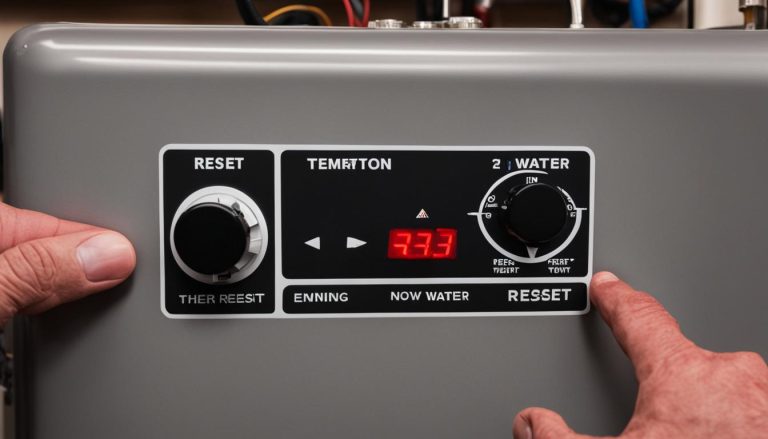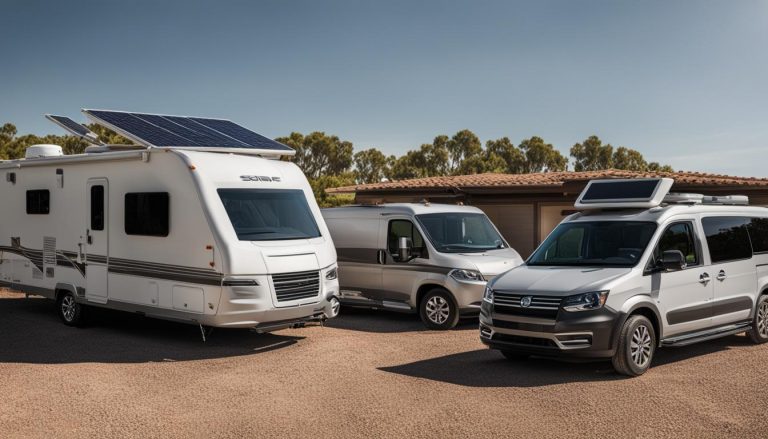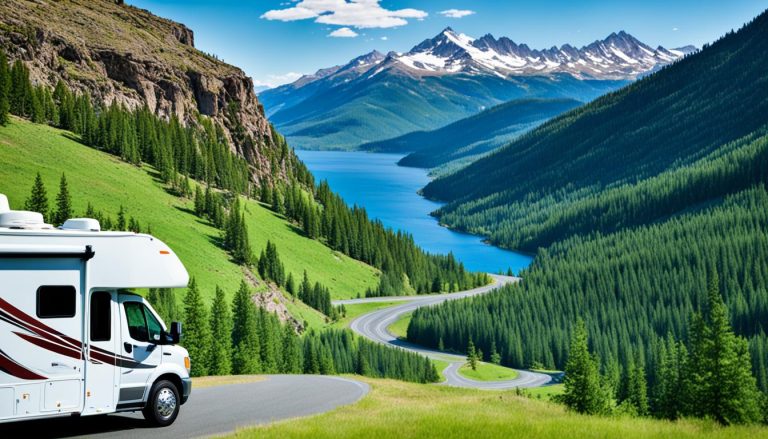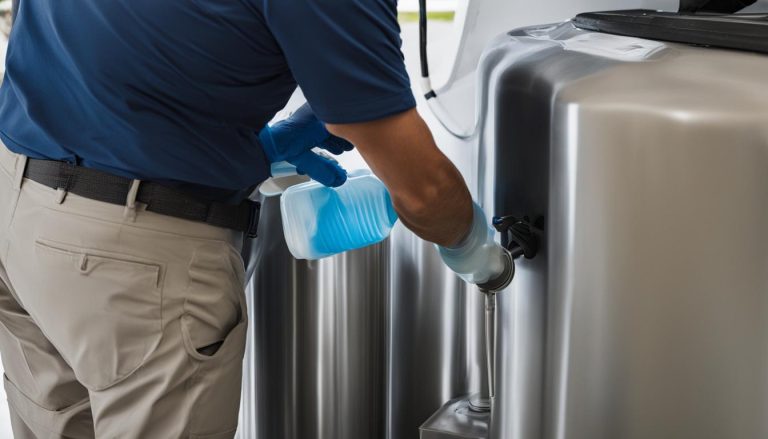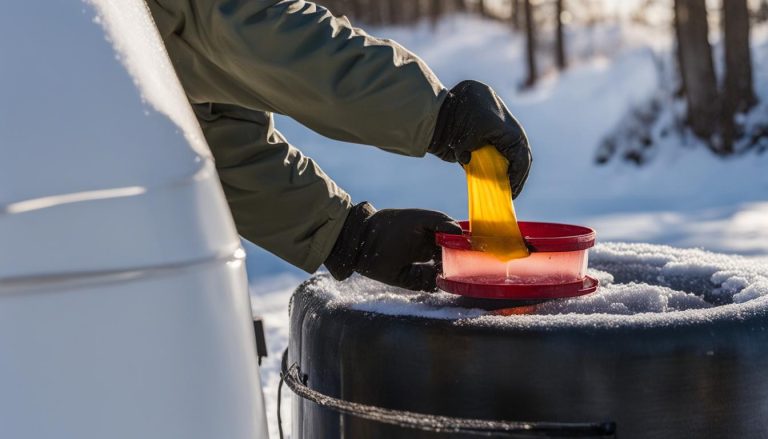RV Toilet Guide: Master How to Use an RV Toilet
gorvlifestyle.com and its partners may earn a commission if you purchase a product through one of our links
Welcome to our comprehensive RV toilet guide where you’ll master all there is to know about using an RV toilet. Whether you’re a seasoned RV enthusiast or new to the world of recreational vehicles, understanding how to properly use and maintain your RV toilet is essential for a hassle-free camping experience.
In this guide, we will focus on the Dometic 8800 series MasterFlush toilets. These toilets are equipped with powerful turbine macerators that virtually eliminate clogs and offer three automatic flush cycle options for convenience. With proper installation and maintenance, these toilets can provide reliable performance throughout your adventures.
Key Takeaways:
- Read and understand the Dometic 8800 series MasterFlush toilet manual before installation and maintenance.
- Follow Dometic’s recommended installation procedures for optimal sanitation system performance.
- The Dometic 8800 series toilets can be plumbed to either a pressurized freshwater system or a raw water system.
- Choose the desired flush cycle option (Normal, Low, or Empty) using the electronic touchpad.
- Only flush water, bodily waste, and rapid-dissolving toilet tissue to avoid clogs and damage.
Toilet Specifications and Dimensions
The Dometic 8800 series MasterFlush toilets come in different models with varying weights and dimensions. Here are the details of each model:
- 8812 Model: This all-ceramic macerator toilet features a low-profile design with a full-size seat and bowl. It weighs approximately 38.6 lbs.
- 8818 Model: With a standard height and a sloped back, this toilet weighs around 46.3 lbs.
- 8819 Model: Another standard height option, this toilet doesn’t have a sloped back. It weighs about 56 lbs.
- 8848 Model: This standard height toilet has a sloped back and an above-floor discharge option. It weighs approximately 46.3 lbs.
It’s important to note that the dimensions of these toilets may vary by up to 3/8 inch.
Having the right specifications and dimensions for your RV toilet is crucial for a comfortable and functional bathroom experience on the road.
Toiler Start-Up and Operation
Starting up and operating your RV toilet is a straightforward process that ensures efficient flushing and disposal of waste. Follow these steps to get your Dometic MasterFlush toilet up and running:
- Turn on the water supply line to supply water to the toilet.
- On the electronic touchpad, select your desired flush cycle option: Normal, Low, or Empty.
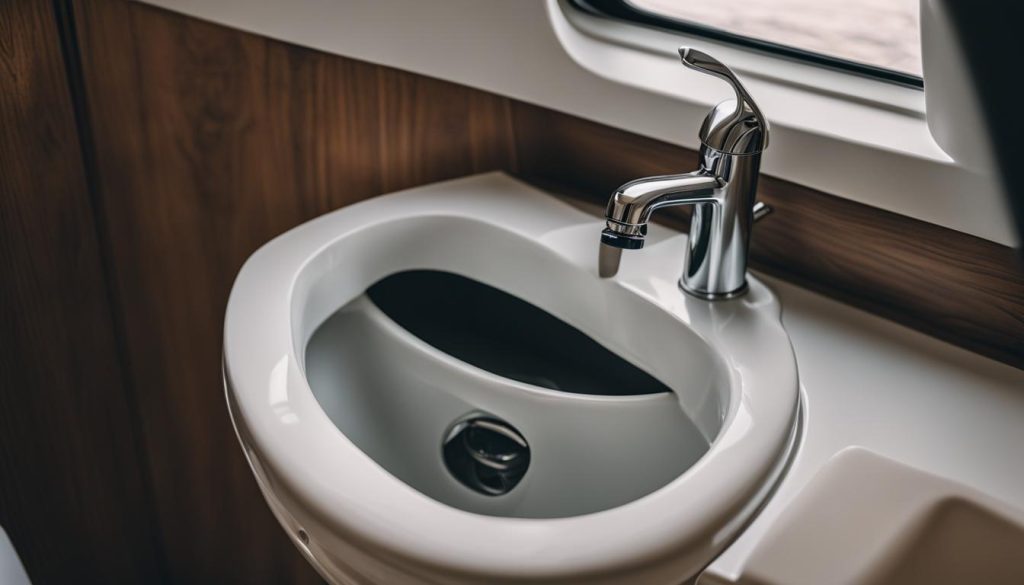 The powerful turbine macerator pump will automatically engage, flushing and macerating waste for proper disposal.
The powerful turbine macerator pump will automatically engage, flushing and macerating waste for proper disposal.- Remember to only flush water, bodily wastes, and rapid-dissolving toilet tissue. Avoid flushing any foreign objects or substances that can cause clogs or damage to the toilet or sanitation system.
- If your RV toilet will be inactive for an extended period of time, remember to turn off the electricity and water supply to conserve energy and prevent any potential leaks.
By following these simple steps, you can ensure the seamless start-up and operation of your RV toilet.
Proper Cleaning and Maintenance
Proper cleaning and maintenance of your RV toilet is crucial to ensure its longevity and efficient operation. By following a few simple steps, you can keep your toilet in pristine condition throughout your travels.
Use Recommended Toilet Tissue
When it comes to toilet tissue for your RV, not all options are created equal. It’s essential to use the recommended toilet tissue that is designed to dissolve quickly and prevent clogs. Avoid using paper towels, wet wipes, sanitary napkins, or any other non-dissolving items that can lead to costly plumbing issues and damage to your RV toilet system.
Regularly Check and Clean Toilet Components
To maintain optimal performance, it’s important to regularly inspect and clean the various components of your RV toilet. This includes the macerator pump, water valve, and vacuum breaker. By keeping these parts clean and free from debris, you can ensure proper functionality and prevent potential problems down the road.
Lubricate the Toilet Seal
One key area that often requires attention is the toilet seal. To ensure a proper seal and prevent leaks, it’s recommended to lubricate the toilet seal using a toilet seal lubricant or vegetable oil. Regular lubrication helps maintain the seal’s integrity and extends its lifespan.
Remove Lime Buildup with Descaling Products
If you’re traveling in an area with hard water, lime buildup can become a common issue in your RV toilet. To combat this problem, use a descaling product like CLR to remove lime deposits from the drain and pipes. By addressing lime buildup promptly, you can maintain optimal water flow and prevent potential blockages.
By following these simple cleaning and maintenance tips, you can ensure that your RV toilet remains in top condition, providing you with a clean and efficient sanitation system for all your adventures.
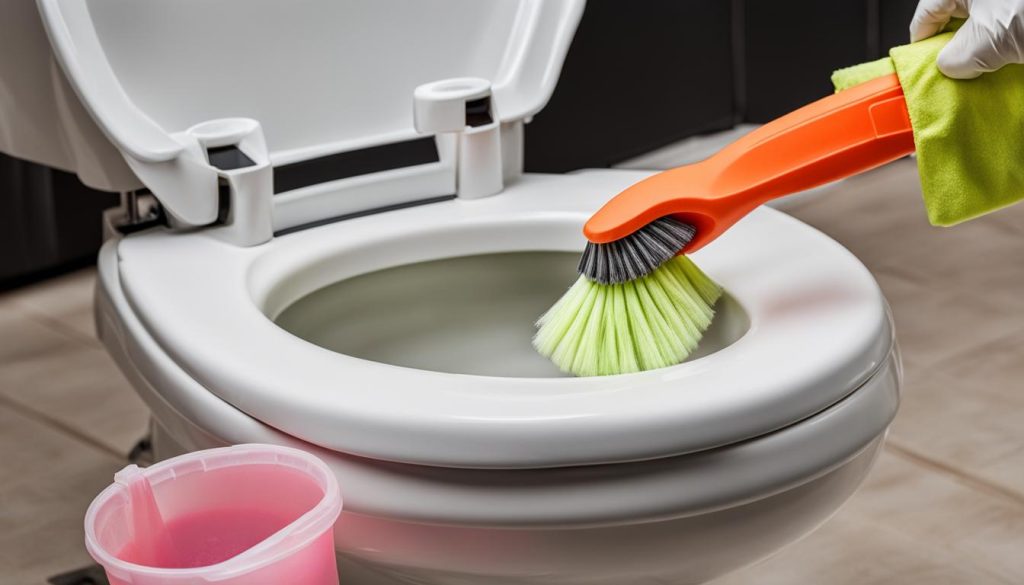
Troubleshooting and Repairs
Experiencing issues with your RV toilet? Don’t worry, we’ve got you covered. Here are some common problems and their troubleshooting steps to help you get your toilet back in working order.
If the seal on your toilet doesn’t completely close, resulting in a half-full or empty basin, it could be due to a faulty seal or valve. To address this, apply toilet seal lubricant or conditioner to help create a proper seal. In a pinch, you can even use vegetable oil. This simple solution can often resolve the issue and prevent any potential leaks.
If you encounter a clog in your RV toilet, don’t panic. You can use a household implement like a plunger or a toilet auger to clear the blockage. Make sure to use gentle, controlled pressure to avoid damaging the toilet. Additionally, if you notice lime buildup in the drain and pipes, a product like CLR can help you get rid of it and restore proper flow.
While troubleshooting can solve many RV toilet problems, there may be instances where professional assistance is necessary. If you notice any cracks or leaks in the toilet components, such as the attached sprayer, it’s crucial to address them promptly. Complex issues may require the expertise of a qualified RV technician or electrician to ensure a proper and lasting repair.
FAQ
How do I use an RV toilet properly?
To use an RV toilet properly, turn on the water supply line and choose the desired flush cycle option (Normal, Low, or Empty) on the electronic touchpad. Only flush water, bodily wastes, and rapid-dissolving toilet tissue. Avoid flushing foreign objects or substances that can cause clogs or damage. Turn off the electricity and water supply if the toilet will be idle for extended periods of time.
What are the specifications and dimensions of the Dometic 8800 series MasterFlush toilets?
The Dometic 8800 series MasterFlush toilets come in different models with varying weights and dimensions. The 8812 model is an all-ceramic, low-profile macerator toilet weighing 38.6 lbs. The 8818 model is a standard height toilet with a sloped back weighing 46.3 lbs. The 8819 model is also a standard height toilet without a sloped back weighing 56 lbs. The 8848 model is a standard height toilet with a sloped back and an above-floor discharge option weighing 46.3 lbs. The dimensions may vary by up to 3/8 inch.
How do I start up and operate my Dometic MasterFlush toilet?
To start up your Dometic MasterFlush toilet, turn on the water supply line and choose the desired flush cycle option by pressing the corresponding button on the electronic touchpad. The toilet will begin flushing and macerating waste using its powerful turbine macerator pump. Remember to only flush water, bodily wastes, and rapid-dissolving toilet tissue, and always turn off the electricity and water supply if the toilet will be idle for extended periods of time.
How do I clean and maintain my RV toilet?
Proper cleaning and maintenance are essential for the longevity and efficient operation of your RV toilet. Use only recommended toilet tissue and avoid non-dissolving items like paper towels, wet wipes, or sanitary napkins that can cause clogs. Regularly check and clean the toilet components, including the macerator pump, water valve, and vacuum breaker. Lubricate the toilet seal with a seal lubricant or vegetable oil to ensure a proper seal and prevent leaks. In hard water areas, use a descaling product to remove lime buildup.
What do I do if my RV toilet malfunctions?
If your RV toilet malfunctions, there are a few common issues to check for. If the seal doesn’t completely close, causing a half-full or empty basin, it may be due to a faulty seal or valve. Apply toilet seal lubricant or conditioner, or even vegetable oil, to troubleshoot this problem. Clogs can be cleared using a household implement, and lime buildup can be treated with a descaling product. If cracks or leaks are detected in the toilet components, such as the attached sprayer, address them promptly. For complex issues, consult a qualified RV technician or electrician.

